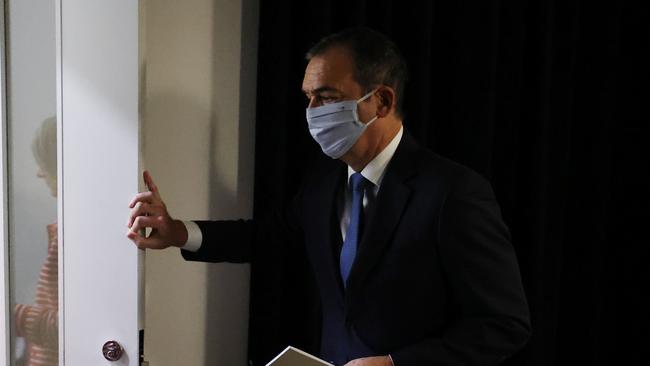Paul Starick analysis: Scenario after South Australia’s lockdown ends | The State
Almost halfway into the seven-day statewide lockdown, here’s what probably happens next if optimism about its end is right.
Opinion
Don't miss out on the headlines from Opinion. Followed categories will be added to My News.
Almost halfway into the seven-day statewide lockdown, there is evidence to justify Premier Steven Marshall’s optimism that restrictions can be eased from Tuesday evening.
Hoping, as every South Australian desperately does, that the outbreak does not explode, authorities will be planning for life after lockdown.
Understandably, they will be wisely and cautiously declaring there’s still a long way to go, as they continue to galvanise people into restricting movement in the fervent hope of stopping the virus’s transmission.
Taking Mr Marshall’s public pronouncements at face value, though, there is cause to hope that schools will go back from Wednesday as part of the return of Level Four restrictions – those that were imposed on the eve of the lockdown.
The enormous caveat is that testing centres have been overwhelmed, posing the risk that undetected Covid-19 is lurking in the community despite the low number of positive cases from record swabbing.
Queues waned on Friday, however, as SA Health’s bureaucracy mobilised after the predictable initial testing surge experienced by other states during their outbreaks – and during the Parafield cluster.

Assuming there is no surge in new cases and they continue to be linked to the outbreak, Mr Marshall has repeatedly declared his hope of returning to a sense of normality with “some stepping down of the restrictions”.
Speaking to The Advertiser on Thursday, Mr Marshall said authorities had planned for a seven-day lockdown “and nothing that’s come since has suggested that we need to alter that”.
“If we’d already started to see examples of unlinked community transmission across the state that would be cause for huge pessimism at this point in time,” he said.
“We’ve got exactly the opposite here. Every one of our cases so far is linked. Yes, we have two super-spreader sites at the moment, but we have a huge number of people in directed quarantine and the entire state in a seven-day lockdown.”
Police Commissioner Grant Stevens, also the state co-ordinator during the Covid-19 emergency, told Friday’s press conference he was “hopeful that seven days will be the extent of the lockdown”.
Chief Public Health Officer Professor Nicola Spurrier said she was reassured by high testing numbers, wastewater test results and public compliance with the lockdown. Assuming these factors continue, a likely scenario is the lockdown would end on Tuesday at 6pm, when Level Four restrictions would return.

Under these restrictions, non-essential retail would remain closed, including hairdressers and beauty services, as would gyms.
Home and private gatherings would be reduced to 10 people.
Importantly, schools and offices would re-open, although people would be encouraged to work from home where possible.
Team, club and contact sport would remain off-limits, including training unless an exemption is granted. Spectators would not be allowed at any sporting activity. Gatherings of more than 1000 people or high-risk events would be banned.
Density for public venues would be back to 1 per 4sq m, or 25 per cent. Thankfully, this includes pubs, clubs, churches and mosques. Masks would be required indoors.
The ongoing risk is not just from within SA but from the “national emergency” declared by NSW Premier Gladys Berejiklian as she on Friday announced 136 new local cases, 53 of whom were infectious while in the community. Professor Spurrier repeatedly has declared her concern about the NSW outbreak.
This has supercharged the importance of vaccination, yet Prime Minister Scott Morrison saying “sorry we haven’t been able to achieve the marks that we hoped for at the beginning of this year” will not accelerate the rollout.
Nor will his attempt to handpass the pressure being heaped upon him to the Australian Technical Advisory Group on Immunisation (ATAGI) over its recommendations about the AstraZeneca vaccine. Intended as the workhorse of Australia’s vaccination rollout, the public perception of AZ has been battered because of deaths from extremely rare blood clots.
Mr Morrison cannot bank on this perception reversing, even if ATAGI loosens its advice.
This creates a hunger games for Pfizer doses, already being evidenced in NSW. Both Victorian Premier Daniel Andrews and Mr Marshall have refused to reduce their states’ allocations for NSW. “From South Australia’s perspective, I’m not wanting to send any of our doses anywhere else,” Mr Marshall said.
After months of near-normality, the pandemic is biting hard. In SA, at least, there is some hope of a pathway back to the Covid-19 normal we once enjoyed.



